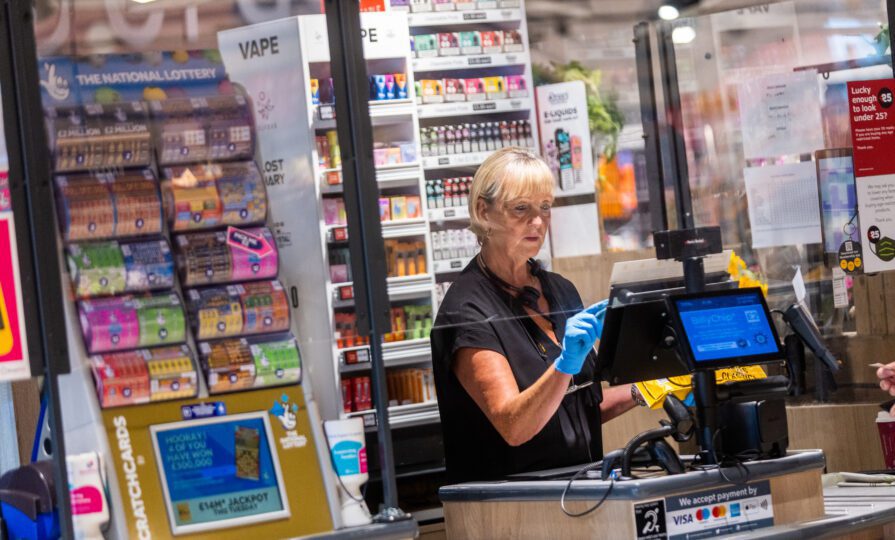The rising tide of crime in UK stores
As retail crime spirals out of control, store owners and employees face an escalating battle against theft, violence, and abuse. With the cost of crime prevention hitting record highs, Helen Dickinson OBE, CEO of the British Retail Consortium (BRC), and a BRC spokesperson Lara Conradie reveal why the industry is at a breaking point—and what must be done to turn the tide

2025 has dawned with a bleak reality for the UK retail sector. Once a thriving cornerstone of the high street and beyond, retailers now find themselves on the frontline of a growing crime wave. Violence, theft, and abuse are no longer isolated incidents but daily occurrences that shape the working lives of store employees.
The latest BRC Crime Survey Report 2025 lays bare the scale of the crisis: over 2,000 incidents of violence or abuse per day—a staggering 340% rise since 2020—while customer theft has surged past the £2bn mark. The overall cost of retail crime, including prevention, now stands at £4.2bn. And behind these numbers lies a deeper crisis of safety, morale, and justice.
“Retail crime is out of control,” says Helen Dickinson OBE, CEO of the BRC. “Colleagues have been punched, stabbed, spat on, while having racist, misogynistic, and generally vile abuse hurled at them.” She adds, “Violence and abuse should never be part of the job.”
Why retail crime is rising
Pinpointing a single cause for the rise in retail crime is near impossible. BRC spokesperson Lara Conradie explains: “It is difficult to pinpoint one reason. Crime in society is generally worsening, and there’s been an uptick in organised crime. We are also hearing from retailers that the situation has worsened since the pandemic, especially with regard to abusive behaviour from the public towards retail workers.”
One of the most troubling trends is the increased boldness of offenders. Retailers report that thieves are not only stealing more but becoming increasingly aggressive. “Retailers have noticed that not only has the amount of shop theft increased, but thieves are becoming bolder, more aggressive, and more frequently armed with weapons,” says Conradie. “There are clear links to organised crime, with groups systematically targeting multiple stores across the country.”
She also acknowledges the role of socio-economic pressures. While not explicitly attributing the rise in theft to the cost-of-living crisis, she notes it remains a relevant factor that many experts point to when assessing crime trends.
At the same time, digital advancements and self-checkout technology have changed the way shoplifting occurs. Many offenders exploit the minimal supervision at self-service tills, using tactics such as scanning high-value items as cheaper products or bypassing the system altogether. Retailers have responded by implementing AI-powered monitoring systems, but as the crime rate suggests, these solutions are not yet foolproof.
Another contributing factor is the seasonal nature of retail crime. “Spikes around holiday shopping periods are likely as the shops are busier,” Conradie notes. With increased foot traffic, offenders find it easier to blend into crowds, making theft and anti-social behavior more prevalent. Security measures are heightened during these peak times, but the sheer volume of transactions makes full enforcement challenging.
The high cost of crime
Retailers are digging deep into their pockets to combat the crime surge. According to the BRC Crime Survey, security spending has hit an all-time high, with businesses investing £1.8bn in crime prevention measures—a 52% increase from last year. The measures include CCTV, additional security personnel, body-worn cameras, and anti-theft devices.
“The amount spent on crime prevention is at a record high,” Conradie confirms. “Retailers are investing in measures such as CCTV, more security personnel, anti-theft devices, and body-worn cameras, up from £1.2bn the previous year.”
Yet despite these efforts, criminals are adapting faster than retailers can react. Organised gangs are using distraction tactics, operating in large numbers, and exploiting vulnerabilities in retail security systems. The cost of preventing crime is not just monetary—it affects staff morale, customer experience, and the very fabric of retail itself.
Retailers are also struggling to balance security with customer experience. Ensuring a welcoming atmosphere while maintaining strong anti-theft measures is a challenge. Conradie highlights this: “Retail crime affects all retailers, no matter the size. We do not represent small retailers, so do not have data to share on this.”
Despite the increasing costs, some retailers believe that the investment is a necessary evil. “We are paying more for enhanced security measures, but these costs are offset by the reduction in losses due to theft,” explains in the report one independent store owner. “However, we cannot sustain this indefinitely without meaningful government action.”
For years, retailers have voiced their frustration at the lack of police intervention. While some improvements have been made, confidence remains low. According to the BRC Crime Survey, 61% of retailers rated the police response as “poor” or “very poor”. Only 32% of violent incidents were reported, with many retailers believing that nothing will come of their reports. Even when reports are made, just 10% of incidents resulted in police attendance, and a mere 2% led to a conviction.
Conradie highlights the issue bluntly: “The police need to ensure they attend to all reported incidents and escalate appropriately.”
Helen Dickinson OBE agrees: “For years, the lack of police action has effectively given these criminals a license to steal, and a green light for aggression. Trust has been eroded.”
With trust in law enforcement at a low, many retailers are taking justice into their own hands. Some have hired private security firms, while others are experimenting with technology-driven crime deterrents, such as automated alarm systems, biometric scanners, and facial recognition software. While these measures provide some deterrence, they raise ethical concerns about privacy and customer profiling.
Can retail turn the tide on crime?
With crime levels soaring, the retail industry faces an uncertain future. While government intervention offers some optimism, real change will require sustained commitment from all stakeholders—retailers, law enforcement, and policymakers alike.
When asked whether retail crime will continue to rise throughout 2025, Conradie remains cautious: “It is difficult to predict this, but we hope that with police co-operation and a standalone offence, we can turn the tide on retail crime.”
The BRC remains committed to pushing for stronger enforcement, better police response, and greater legal protections for retail workers. Their top recommendation? Keep up the pressure and ensure all parties remain engaged. “The will is clearly there from all parties to turn the tide on retail crime, so let’s continue to work together to reverse this horrible trend,” Conradie concludes.
The coming months will prove crucial. Will the UK finally take a stand against retail crime, or will the industry continue to suffer at the hands of emboldened criminals? One thing is clear—action is needed, and it is needed now.



